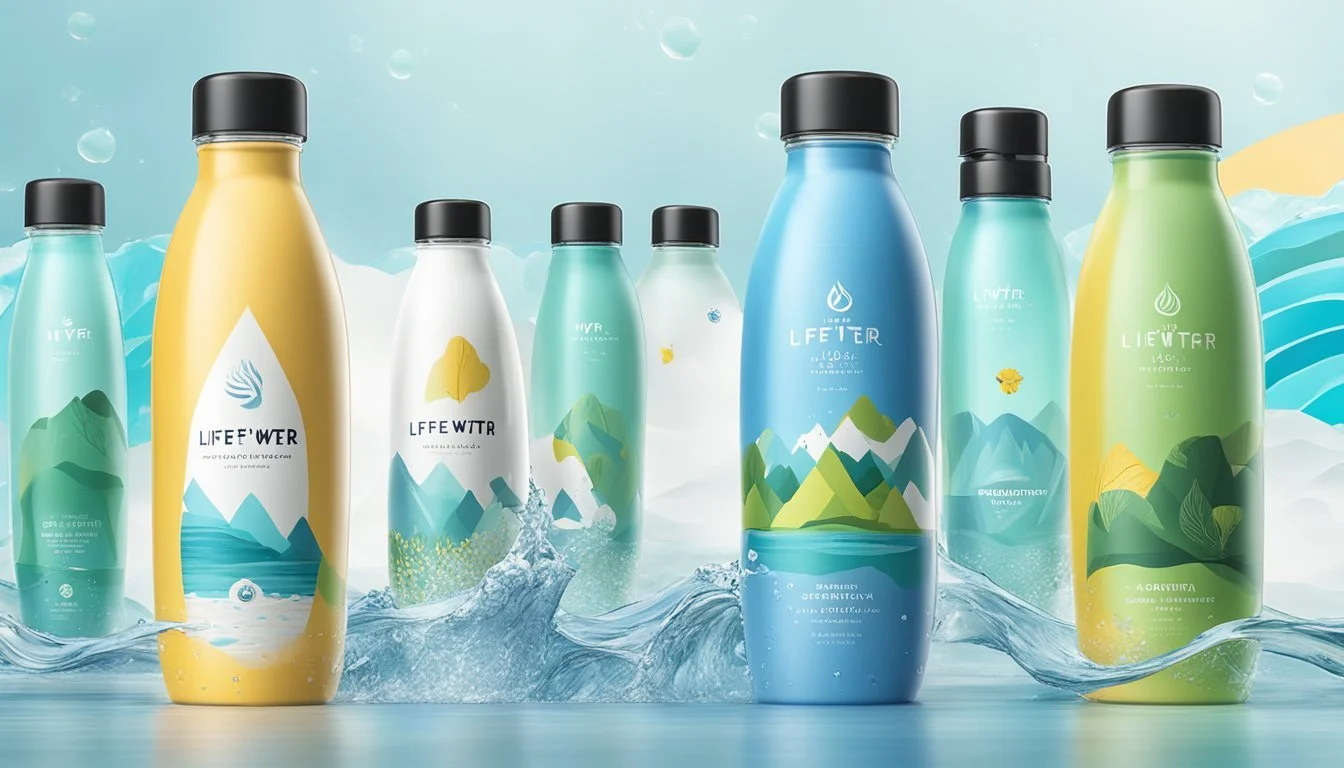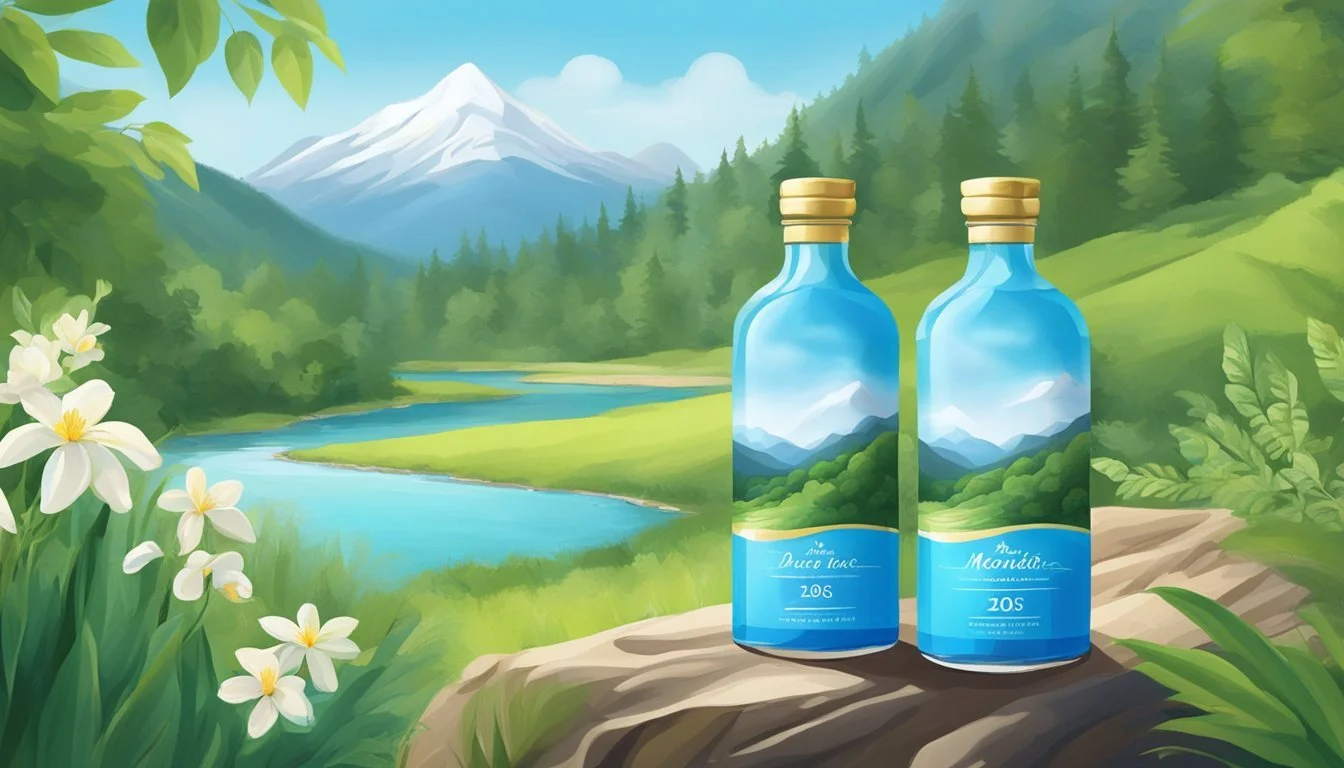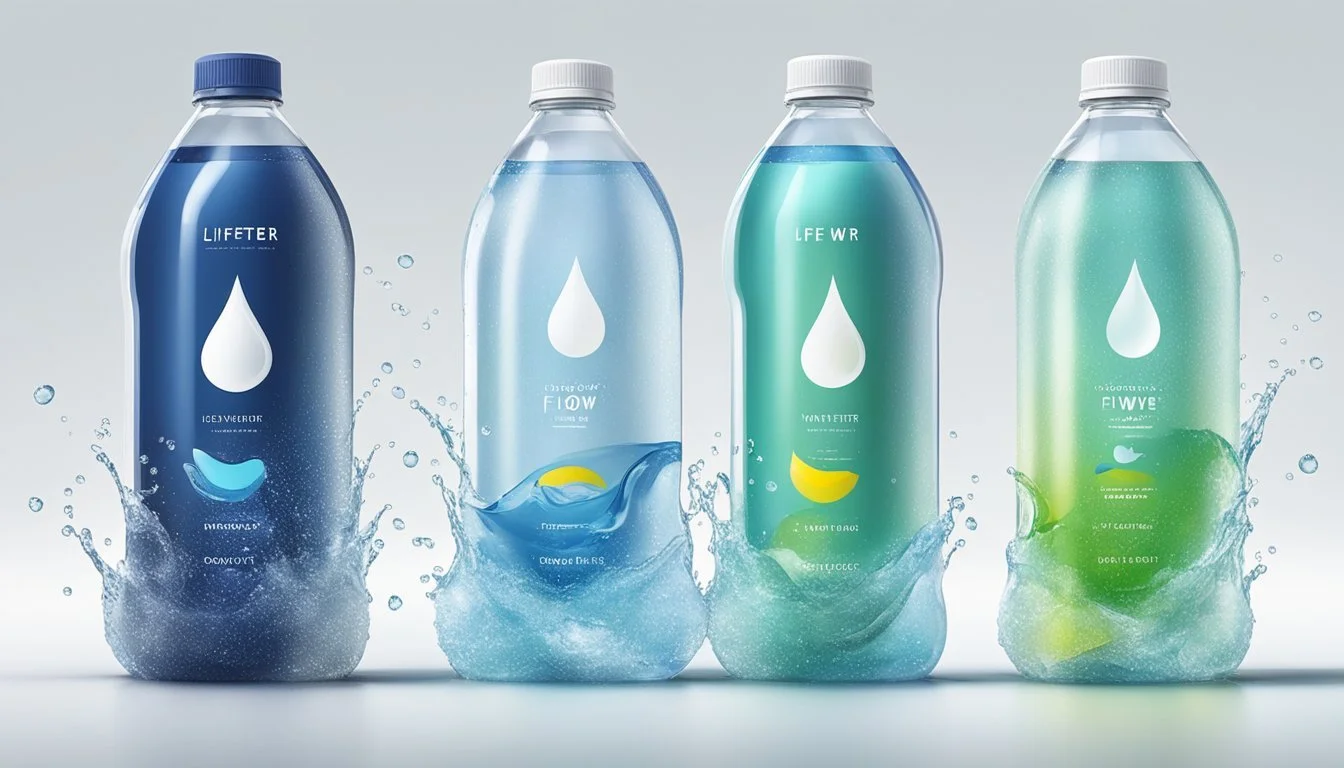LIFEWTR vs. Flow
Which Bottled Water is Better? Comparing Purity and Taste
Choosing the right bottled water can make a big difference, especially if hydration and taste are top priorities. Two popular brands, LIFEWTR and Flow, are often compared for their unique attributes. Both promise high-quality hydration, but their approaches and characteristics vary.
LIFEWTR offers water that is purified and enhanced with electrolytes for taste, aiming for a balanced pH level that falls between 6.4 to 7.4. On the other hand, Flow is known for its natural alkaline water with a higher pH level, sourced from natural springs and packaged in eco-friendly cartons. For those who prioritize eco-friendliness and natural alkalinity, Flow may be the better choice.
Taste is a subjective matter, yet it plays a crucial role in determining preference. Some consumers enjoy the crisp, clean taste of LIFEWTR, while others appreciate the smooth, refreshing quality of Flow. Knowing the differences can help you decide which brand aligns better with your hydration and taste preferences.
Comparing Water Sources
Both LIFEWTR and Flow leverage unique sources and purification processes to offer distinct hydration experiences to consumers.
Origin and Source
LIFEWTR, a product of PepsiCo, primarily uses municipal sources, which are treated through advanced purification processes. This essentially means that LIFEWTR starts with tap water, which then undergoes rigorous filtration to remove impurities. This ensures a consistent quality, aligning it with other brands like Dasani and Aquafina, which also use tap water sources subjected to purification.
On the other hand, Flow sources its water from natural springs. This brand prides itself on tapping into sustainable sources, specifically artesian springs. Flow captures water naturally filtered through layers of limestone, ensuring it remains mineral-rich and free from common urban contaminants. This makes Flow comparable to brands like Fiji and Evian, which draw from pristine, natural sources such as the French Alps and artesian aquifers.
Purity and Contaminants
The purity of LIFEWTR is maintained through a multi-step filtration process, including reverse osmosis. This removes potential contaminants such as lead and heavy metals. The water is then infused with electrolytes for taste, which is a method also adopted by Coca-Cola's Smartwater. This purification process ensures that LIFEWTR remains free from common impurities while delivering a crisp taste.
Flow prides itself on its naturally alkaline nature and mineral content. With a pH level typically around 8.1, it offers a balanced taste while maintaining high purity standards. Flow's filtration through natural limestone strata helps to remove bacteria and impurities naturally. This aligns with other spring water brands like Icelandic Glacial and Mountain Valley, known for their low contaminant levels due to natural filtration processes.
Filtration and Purification Processes
LIFEWTR and Flow both utilize advanced methods to ensure the purity and safety of their bottled water. Examining their filtration techniques and how they enhance the purity sheds light on their commitment to quality.
Filtration Techniques
LIFEWTR sources its water from public water systems—essentially tap water. It purifies this water through a multi-step filtration process. This includes activated carbon filtration to remove chlorine and other contaminants, followed by microfiltration to capture finer particles.
Flow, on the other hand, benefits from its source: natural springs. The water from these springs undergoes minimal filtration. The natural filtration through earth layers already purifies it effectively, maintaining essential minerals without the need for extensive treatments. This process ensures a consistent quality and taste.
Smartwater, another competitor, relies on vapor distillation. This method involves turning water into vapor and then condensing it back to liquid, ensuring the removal of impurities. However, this can strip away natural minerals, which Smartwater then reintroduces along with electrolytes for taste enhancement.
Enhancing Purity
LIFEWTR enhances its purified water by adding a carefully selected blend of electrolytes and minerals. This not only improves the taste but also ensures the water remains balanced in terms of pH.
In comparison, Flow uses natural filtration, preserving a variety of naturally occurring electrolytes and minerals. This method, combined with the low presence of total dissolved solids (TDS), contributes to its smooth and refreshing taste.
For instance, while Aquafina uses a proprietary purification process named HydRO-7, eliminating many impurities, the water can be on the acidic side with a pH around 5.95. In contrast, LIFEWTR maintains a slightly alkaline pH due to its added minerals, enhancing its overall taste and purity.
The rigorous filtration and mineral enhancement in LIFEWTR, along with Flow’s natural processes, exemplify their dedication to delivering high-quality bottled water, each with unique approaches to purity and taste.
Nutritional and Health Benefits
LIFEWTR and Flow both provide unique advantages when it comes to nutritional value and health benefits. This section will explore the essential minerals, electrolytes, hydration, and pH balance to understand their impact on the body's needs.
Essential Minerals and Electrolytes
Both LIFEWTR and Flow contain essential minerals and electrolytes that support various bodily functions.
LIFEWTR includes magnesium, potassium, and calcium, which are critical for muscle function and nerve signaling. These minerals also aid in maintaining fluid balance within the body, making LIFEWTR a good choice for those needing to replenish electrolytes.
Flow distinguishes itself with its use of naturally occurring minerals. Sourced from an artesian spring, Flow provides a rich blend of electrolytes and minerals, including magnesium and potassium. This natural composition can enhance muscle performance and overall hydration.
Both brands enhance their water to provide additional health benefits, focusing on replenishing the body's minerals that may be lost during physical activities.
Hydration and pH Balance
Hydration and pH balance are critical factors in assessing bottled water quality.
LIFEWTR tends to have a pH level between 6.4 to 7.4, offering a slightly acidic to neutral hydration option. This balance allows for optimal daily hydration without significantly altering the body's pH levels.
Flow offers alkaline water with a pH typically above 8. This higher pH level may benefit those looking to neutralize acidity in the body. Alkaline water is believed to aid digestion and enhance hydration, making Flow a preferred choice for people seeking these specific health benefits.
Both LIFEWTR and Flow are designed to keep the body well-hydrated, with subtle differences in pH levels catering to individual preferences and health needs.
Taste Profile Comparison
LIFEWTR and Flow offer distinct taste profiles influenced by their unique mineral compositions and sources. This section examines their water flavor, mouthfeel, and mineral content, which contribute to their aftertaste.
Water Flavor and Mouthfeel
LIFEWTR has a clean and crisp taste, often described as refreshing with a smooth feel. This is attributed to its purification process and balanced pH level, typically ranging from 6.4 to 7.4.
Flow, sourced from natural springs, provides a softer and more alkaline taste due to its higher pH, around 8.1. This alkaline nature creates a silky mouthfeel, which some consumers find more palatable.
Comparatively, Smartwater offers a pure, vapor-distilled taste, while Essentia and Core Hydration bring a slightly alkaline profile with a smooth finish. Fiji, known for its artesian source, offers a distinct, full-bodied flavor.
Mineral Content and Aftertaste
LIFEWTR is infused with electrolytes like potassium bicarbonate and magnesium sulfate to enhance taste and ensure hydration. This results in a subtle aftertaste that balances minerals without overpowering the palate.
Flow contains natural minerals, including calcium and magnesium, leading to a refreshing aftertaste. The natural bicarbonate in Flow gives it a slightly alkaline tinge, which can leave a smooth finish.
Essentia, known for its high pH, provides a crisp and clean aftertaste with added minerals. In contrast, Fiji’s natural silica content gives it a smooth, unique taste. Core Hydration offers a balanced mineral blend for a crisp aftertaste without an overpowering flavor.
Product Design and Branding
This section provides an in-depth look at the unique design and branding strategies of LIFEWTR and Flow. It highlights the importance of artistic design in LIFEWTR's brand and examines Flow's emphasis on eco-friendly packaging.
LIFEWTR’s Artistic Edge
LIFEWTR emphasizes creativity and visual appeal by integrating art into its packaging. Each bottle features designs from emerging artists, making it a canvas for creative expression.
This strategy not only promotes the artists but also attracts customers looking for aesthetically pleasing products. By changing the artwork on its bottles regularly, LIFEWTR creates a sense of novelty and exclusivity.
The bottles are made from BPA-free plastic, ensuring safety and sustainability. PepsiCo, the parent company, positions LIFEWTR as a premium brand, competing with other high-end bottled waters like Voss and Fiji.
Their branding extends beyond water, making each purchase a support for the arts community. This dual focus on art and premium quality differentiates LIFEWTR from competitors.
Flow’s Eco-Conscious Approach
Flow focuses on sustainability and environmental impact with its product design. The brand uses 100% recyclable and BPA-free paperboard cartons, reducing reliance on plastic bottles.
This eco-friendly packaging appeals to environmentally conscious consumers who prioritize reducing their carbon footprint. The cartons feature minimalist designs, conveying simplicity and purity.
Flow differentiates itself by emphasizing renewable resources and a lower environmental impact. This commitment to sustainability is increasingly appealing in a market where consumers are more eco-aware.
Flow’s cartons are not just environmentally friendly but also practical, as they are easy to carry and store. This design choice, coupled with the brand’s dedication to sustainability, contributes to its strong market presence.
Environmental Considerations
When evaluating the environmental impact of LIFEWTR and Flow, it is essential to consider their packaging materials and adherence to regulatory standards. Both brands aim to offer sustainable options, but their approaches and compliance with regulations can vary.
Sustainability and Packaging
LIFEWTR packages its products in 100% recyclable plastic bottles, which contributes to reducing waste. Despite this, the bottles are still plastic, which can be a concern due to the broader environmental impact of plastic production and disposal.
Flow uses paper-based cartons that are 68-75% renewable and include a small percentage of plastic and aluminum. This type of packaging is BPA-free and aims to be a more eco-friendly alternative. The cartons are also recyclable, though the availability of carton recycling facilities may vary by region.
Coca-Cola, which produces Smartwater, another market player, has also committed to recycling initiatives. However, Nestle's products, like Arrowhead and Nestle Pure Life, often face criticism regarding their environmental footprint and use of single-use plastics.
Regulatory Standards and Compliance
Both LIFEWTR and Flow comply with stringent FDA regulations, ensuring the safety and quality of their bottled water. The Environmental Protection Agency (EPA) also sets guidelines that these brands must follow, particularly relating to source water and bottling processes.
LIFEWTR adheres to the purity standards and ensures that their products are free from contaminants. The company engages in routine testing to maintain compliance.
Flow follows similar regulatory frameworks, emphasizing their natural alkalinity and mineral content. Their BPA-free packaging aligns with health safety standards and reflects their commitment to low environmental impact.
Meeting regulatory standards is critical to maintaining consumer trust and environmental responsibility. Both brands strive to uphold these standards to offer safe, quality water products while minimizing their environmental impact.
Market Position and Consumer Preference
LIFEWTR and Flow cater to distinct segments of the bottled water market with unique selling points. Their market positions are influenced by brand loyalty, market trends, and competitive pricing.
Brand Loyalty and Market Trends
LIFEWTR has established a robust market presence through strategic advertising and consumer engagement, often featuring artistic designs on their bottles to attract a creative audience. Flow emphasizes sustainability with its eco-friendly packaging and natural alkaline water, appealing to environmentally conscious consumers.
In the bottled water market, brand loyalty plays a pivotal role. Brands like Evian, Fiji Water, and Voss maintain strong followings due to their perceived premium quality and distinct branding efforts. The market trend is increasingly favoring brands that offer added health benefits or sustainable packaging solutions.
Consumer preferences vary, driven by factors such as taste, brand reputation, and ethical considerations. For instance, consumers might choose Flow for its eco-friendly packaging whereas they might pick LIFEWTR for its artistic branding and taste.
Comparative Price Analysis
LIFEWTR and Flow both position themselves as premium bottled water brands. At a suggested retail price, LIFEWTR's 1L bottle is usually priced around $2.70, making it competitive yet premium in range.
Flow is similarly priced, reflecting its premium positioning and commitment to sustainability. These prices are on par with other high-end water brands like Evian and Fiji Water, underscoring their market strategies targeting consumers willing to pay for quality and ethical sourcing.
This pricing strategy allows them to compete effectively in a market where consumers are increasingly aware of both taste and the environmental impact of their choices. This aligns with broader market trends showing an upward consumer shift towards premium bottled water options.
Final Considerations and Verdict
When comparing LIFEWTR and Flow bottled water, several factors come into play.
Quality is a major factor. LIFEWTR is known for its purified water with added electrolytes, while Flow boasts natural spring water with an alkaline pH of 8.1.
In terms of Taste, preferences can differ. LIFEWTR offers a clean, crisp taste, whereas Flow has a smoother taste due to its natural mineral content.
Health Benefits are another important aspect. Flow's higher pH level can help neutralize acidity in the body, while LIFEWTR provides essential electrolytes, potentially aiding in hydration and replenishment.
Environmental Impact is increasingly important. LIFEWTR uses recyclable plastic bottles, but Flow takes it a step further with eco-friendly, tetra-pak packaging made from renewable resources.
For Purity, LIFEWTR undergoes a rigorous purification process, whereas Flow offers naturally occurring pure spring water.
Ph Balanced water is crucial for some. Flow's alkaline water can help maintain a balanced pH level in the body. LIFEWTR is slightly more acidic to neutral, with a pH range of 6.4 to 7.4.
A comparison of hydration benefits shows both brands excel in providing appropriate hydration. LIFEWTR's electrolytes play a vital role, while Flow's natural minerals contribute to overall hydration.
LIFEWTR:
Source: Purified
pH: 6.4 - 7.4
Packaging: Recyclable plastic
Electrolytes: Yes
Flow:
Source: Natural spring
pH: 8.1
Packaging: Tetra-pak
Electrolytes: Yes, natural
The ranking on various factors will depend on personal preferences and priorities, such as taste, health, and environmental impact.
More About LIFEWTR
Icelandic Glacial vs LIFEWTR: Which Bottled Water is Better?
LIFEWTR vs Kirkland Signature: Which Bottled Water is Better?
LIFEWTR vs Mountain Valley Spring Water: Which Bottled Water is Better?
LIFEWTR vs Richard's Rainwater: Which Bottled Water is Better?
LIFEWTR vs Whole Foods Italian Still Mineral water: Which Bottled Water is Better?





